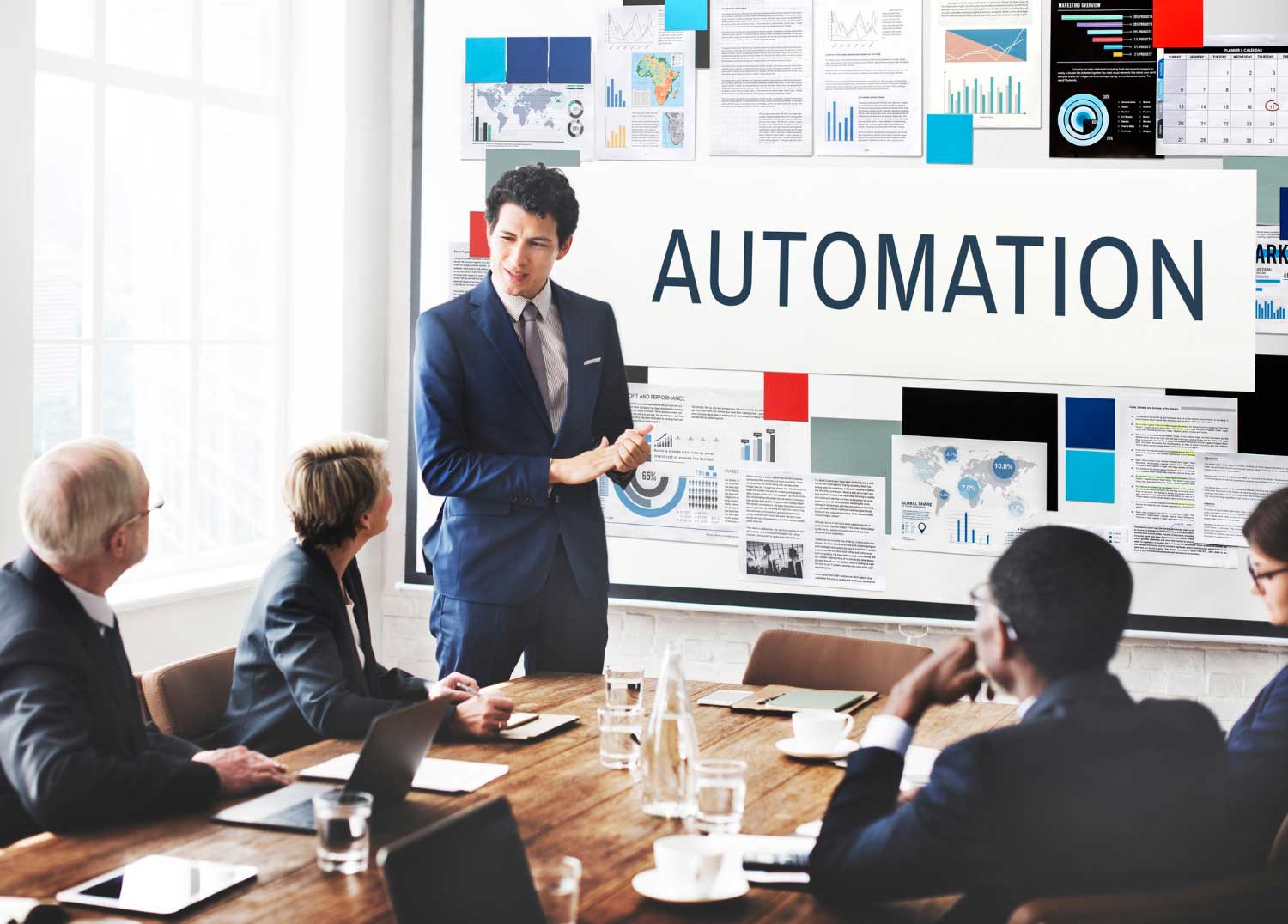The concept of AI in IT determines the future and everything it holds. Not only has AI revolutionised conventional computing techniques, but it has also penetrated other industries and profoundly changed them. IT firms must keep up with rising process complexity and fast innovations as the world becomes more digitized and all businesses become much more intelligent.
Driving creative ideas while coping with the negative consequences of traditional networks is a tricky balancing act that the IT industry must perform. It is compelled to hunt for the most efficient solutions to improve IT operations management and speed up problem resolution in complicated contemporary technology environments.
As IT infrastructures get more complex and clients become increasingly sophisticated. The vast, changing, and challenging-to-manage IT landscape has found considerable use for the enormous advancement in AI.
AI tools have considerable significance in the world of the IT industry. In the following article, you will get to learn how AI-driven automation and its impact on the IT industry. So let’s start!
With the help of AI Tools, get into automation: Give opportunities to businesses, the economy, and society
The field of computer science, known as artificial intelligence, includes AI tools. Develops systems that carry out human-like functions like speech and text recognition, content learning, and problem-solving. Computers can do specialised tasks by analysing vast amounts of data and finding recurring patterns in that data using AI-powered technologies.
Although artificial intelligence and automation are not new, current technology advancements are expanding the capabilities of machines. According to our research, society needs these advancements to benefit businesses, promote economic growth, and solve some of the most severe societal problems. Therefore let’s have a look at what they are:
The rapid advancement of technology
New generations of more powerful autonomous systems are emerging in situations ranging from autonomous automobiles on roadways to automated check-outs in grocery shops, going beyond conventional industrial automation and advanced robots. Moreover, Improvements in systems and elements, including mechanics, sensors, and software, have been primarily responsible for this success.
As machine-learning algorithms have advanced, utilised vast improvements in computer power, and utilised the exponential rise of data available to train them, AI has made particularly significant strides in recent years. Notable developments are making news, which involves superhuman powers in computer vision, natural language processing, and challenging games like Go.
Possibility to change industries and spur economic growth
Companies from all industries utilise these technologies in various processes to personalise product suggestions and spot manufacturing abnormalities and scams. These technologies are already producing value in a variety of goods and services. The most recent AI developments, including methods for categorisation, estimation, and grouping issues, offer even more significant benefits.
The most sophisticated deep learning techniques using artificial neural networks could generate a total of $3.5 trillion to $5.8 trillion in value annually, or 40% of the value produced by all analytics techniques, according to an analysis we did of several thousand AI use cases.
At a time when ageing and declining birth rates are slowing growth, AI and automation technologies can significantly boost the global economy and raise global prosperity. In the 2008 financial crisis, after a previous productivity boom had faded, labour productivity growth, a key driver of economic growth, slowed in many economies, falling to an average of 0.5 per cent in 2010-2014 from 2.4 per cent.
A decade earlier in the United States and major European economies. AI and automation can stop this downward trend in productivity; over the next ten years, productivity growth might average 2% yearly, with 60% of the growth coming from digital prospects.
Possibility of assisting with several societal moonshot concerns
Additionally, AI is being applied in climate science, medical research, and material science. The use of technology in these and other fields could aid in the solution of societal moonshot problems.
For instance, Geisinger researchers have created an algorithm that could slash the time it takes to diagnose cerebral hemorrhaging by as much as 96%. While this happens, scientists at Washington’s Georgetown School use machine learning to more precisely weigh the climate models that the UN Framework Convention on Climate Change uses.
Obstacles to overcome: potential to benefit the global economy and society.
Automation and AI still need fixing. Technical restrictions include the necessity for enormous training data and difficulty in “generalising” algorithms across use cases. These concerns are only now beginning to be addressed by recent technologies. The application of AI technology also presents difficulties.
It can be technically challenging to explain conclusions produced by machine learning algorithms, for instance, significant for use cases, including loans or legal applications. Issues including potential bias in training data and algorithms, data privacy, unlawful use, and security must all be considered. Europe is leading along with the new General Data Protection Regulation, which codifies more substantial user rights over data collection and use.
The ability of organisations to adopt these technologies presents a new type of issue, as it is frequently challenging due to people, data availability, technology, and process preparedness. Across industries and nations, adoption is already uneven.
AI use is most prevalent in the financial, automotive, and communications industries. Regarding individual nations, the US placed first in AI investment in 2016 with investments between $15 and $23 billion, Asia with investments between $8 and $12 billion, and Europe with investments between $3 and $4 billion.
How AI and automation will affect work?
According to our examination of more than 2000 job activities spanning more than 800 occupations, some categories of work activities are more accessible to automate than others. They consist of physical activities performed in highly structured and predictable surroundings and data gathering and processing.
About half of all human activity across all sectors is comprised of these. Among the least vulnerable categories are managing others, giving knowledge, and interacting with stakeholders.
Automation will impact almost all jobs, although only approximately 5% may be mechanised using the currently available technologies. Around 30% of the tasks in 60% of all occupations could be automated, with many more occupations having sections of their constituent activities that are automatable. This implies that most workers, including CEOs, mortgage brokers, and welders, will collaborate with quickly advancing machinery. As a result, these jobs will probably change in nature.
Critical workforce transitions and Challenges
Artificial intelligence (AI) has significantly impacted the IT sector with rapid development and workplace integration. Even though automation enabled by artificial intelligence does have the potential to give exponential growth and effectiveness to production, it also presents significant labour shifts and problems that must be carefully considered. Read how AI tools and technology are helpful for critical workforce transitions in the IT industry.
For an employee to succeed in the future workplace, they will require various talents.
Automation will hasten the change in workforce skills occurring over the past 15 years. The demand for highly technical skills like programming will rise quickly. Demand for higher-order social, emotional, and cognitive abilities like creativity, critical analysis, and sophisticated information processing will also increase. The demand for fundamental digital skills has been rising, and this tendency will only intensify.
In many countries, the demand for physical and manual skills will diminish but will still account for the largest category of worker skills in 2030. This will exacerbate the already pressing issue of workforce skills and the requirement for new credentialing systems. While some novel solutions are emerging, it will be necessary to find ones that can handle the size of the problem.
There will probably be a need for many employees to switch jobs.
According to our analysis, the midpoint scenario predicts that by 2030, between 3% and 14% of the world’s workforce will need to switch occupational categories. While many changes will occur across industries and countries, some will occur within specific businesses and industries.
There will be a drop in manual labour jobs in highly structured environments or data processing or collecting. Managers, who perform tasks that are difficult to automate, and plumbers, who work in physically uncertain surroundings, will both experience growth in their respective fields. Teachers, nursing assistants, computer professionals, and other professions will all experience an increased demand for labour shortly.
As more people use machines alongside humans, workplaces and processes will alter.
Workflows and workspaces will continue to change as intelligent devices and software becomes more fully integrated into the workplace, making it possible for humans and machines to collaborate. For instance, if self-checkout equipment is implemented in stores, cashiers can transition into check-out assistance helpers who can assist with inquiries or system troubleshooting.
The entire workflow and environment must be rethought due to more system-level solutions. The layout of a warehouse may alter dramatically if some areas are planned primarily to house robots and other areas to enable secure human-machine interaction.
In industrialised economies, automation exerts pressure on average earnings.
The changes in the occupational mix will put pressure on wages. Many middle-wage occupations are currently available in industrialized nations dominates by highly automatable professions like manufacturing or accounting. Although there will be a significant increase in high-paying positions, particularly for highly skilled professionals in the medical, tech, or other fields.
Many of the new occupations that are anticipated to be created, like those for teachers and nursing assistants, often have lower pay scales. Automation runs the risk of escalating the wage disparity, income inequality, and lack of income growth that have characterised industrialised countries over the previous ten years and igniting social and political conflicts.
The workforce is already facing difficulties in the face of these impending problems.
Most nations already need help to appropriately educate and equip their labour forces to satisfy the demands of employers today. Over the past 20 years, spending on worker learning and development has decreased across the OECD. Spending on worker transition and relocation aid has likewise declined as a proportion of GDP.
One lesson from the previous ten years is that even though consumers and economic growth may have benefited from globalization, the consequences of wages and job displacement on workers still need to be fully considered. Most evaluations, including our own, indicate that the severity of these problems expects to worsen over the next few decades.
AI for Quality Assurance
The use of artificial intelligence (AI) as a tool for quality control is growing in popularity. AI can assist in streamlining the quality control process and enhance product quality by identifying patterns in massive amounts of data and processing them.
Artificial intelligence (AI) could be used to analyse production data in real-time, spot flaws, and even anticipate future quality problems in advance. Businesses may lower the likelihood of product recalls, boost customer happiness, and boost their bottom line by adopting AI for quality assurance.
AI can also lessen human mistakes and give quality control staff more time to work on challenging tasks. As AI technology develops, it anticipates to play a more significant role in assuring product quality across various industries. Hence to know how AI is beneficial for quality assurance, read this section of the article carefully.
Software testing AI for QA
Every new code a development team creates must test before release to the public. It takes much time and effort if QA professionals perform manual regression testing cycles. This process can carryout more quickly and easily because of AI’s capacity to recognize repeating patterns. QA departments may cut running test time, do away with human mistakes, and quickly spot flaws using AI for data analysis. A QA team does not have to deal with excessive amounts of data.
Application Testing
An AI-based system creates test suites by analysing behavioural patterns depending on the spot, device, and demographics. Furthermore, it enables QA departments to streamline testing procedures and improve an application’s efficacy.
Social Media Analysis
AI systems can process and analyse massive amounts of social media data. Using these data, the system can forecast market trends and client behaviour, giving a business a competitive edge.
Defect analysis
To find faults or areas that need extra attention, AI systems monitor and analyse data before comparing it to predetermined parameters. The system generates a warning if it finds a flaw or an error. The AI system may also do a thorough study of faults that have happened, identify regions that are most susceptible to flaws, and offer potential solutions for further optimisation.
Efficiency analysis
An AI system offers QA helpful information by analysing and condensing pertinent data from various sources, giving QA engineers a complete picture of the changes they must make. QAs can make better-informed decisions using this information.
Self-solving service desk
Today, AI provides IT organisations with a self-solving service desk that can analyse all company information entered and, as a result, present users with appropriate suggestions and potential solutions. This is made possible by AI’s machine learning capabilities. By employing AI, businesses can monitor customer behaviour, advise changes, and offer self-help alternatives to improve service management. In this instance, increased self-service provided by AI eventually improves the user experience.
The system can examine a request sent to a service desk thanks to AI’s ML and DL abilities. The AI system identifies concurrent requests, compares recently file requests to those that have already resolve, and then uses experience to choose which solution to choose instantly.
AI is a potent business tool that supports an IT team’s operational procedures and enables more strategic behaviour. The AI system may generate suggestions for process optimisation and even create a successful business strategy by monitoring and analysing user behaviour.
AI for Process Automation
With network innovation, the theory of evolution, complexity, or change, humans and manual procedures can no longer keep up. AI is the next step in automation. Different business processes will become more contextual, aware, and intelligent.
IT firms can easily automate numerous operational procedures thanks to AI-powered automation, cutting costs and decreasing manual labour. In addition, by automating repetitive manual procedures and business processes, IT process automation can streamline diverse IT operations in various contexts.
AI-driven computer engineering
AI is where computer programming heads. In conventional programming, code comprises rule-based choices made in intricate conditionals. Soon, a sophisticated AI system that comprehends the fundamentals of code will be able to operate and control the software development cycle independently. AI now makes it simpler for developers to code by assisting human programmers in navigating the growing number of APIs.
The Final Thought:
The more intelligent and effective business has resulted from the rapid growth of modern technologies. The IT sector uses AI tools to address and avert serious offences. Through machine learning and deep learning, typical IT operations can be changed to become more intelligent, time-saving, and effective. The main applications of AI have been in quality assurance, service management, and process automation. Additionally, AIOps provide a more effective way to manage IT operations.
________________________________________________________________________________________________
We are always available for your help and our team offers you round-the-clock support and services to make sure you always thrive online. Contact us at [email protected] to know more about our Services like HTML & WordPress Pre-Landers, Landing Pages, Safe websites for Affiliate Marketer, Any verticals(Crypto/Dating/Forex, etc.) & Digital Marketing Services (SEO, SMM, PPC).
Visit Our Website www.monoinfotech.com
Telegram – @NobalSitlani
Skype – live:nobal.sitlani









